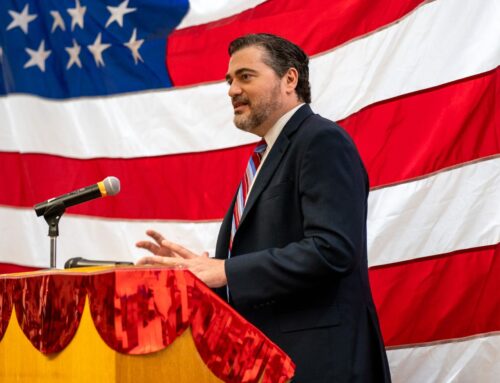By Kim Slowey, Construction Dive | July 26, 2019

(Credit: Getty / edited by Industry Dive)
Dive Brief:
- The Department of Homeland Security’s (DHS) U.S. Citizenship and Immigration Services (USCIS) has announced revisions to existing EB-5 foreign investor visa requirements, citing the need for both modernization and reform. The EB-5 program allows foreign nationals to invest in U.S. projects in exchange for priority processing of their green card applications.
- There are five changes to the rules, and they are (1) priority date retention, which will allow investors to keep their place in line in the application process if they have to change their qualifying investment due to circumstances beyond their control; (2) increases to minimum investment amounts — an increase from $1 million to $1.8 million for standard investments and an increase from $500,000 to $1 million for investments in a targeted employment area (TEA); (3) a shift in the authority for making TEA designations from states to DHS; (4) a clarification of rules regarding an investor’s derivative family members; and (5) miscellaneous changes and clarifications.
- DHS published the new rule in the Federal Register on July 24 and changes will take effect on Nov.
Dive Insight:
The two changes that have the most potential to impact the construction industry are the increased minimum investment thresholds and the possibility that some projects will no longer qualify under the TEA designation, but experts don’t think that the revisions will slow down the stream of foreign investors eager to qualify for a green card.
“If you increase the price, you should be reducing the demand,” said attorney Isaac Marcushamer with Mark Migdal & Hayden in Miami, “but that’s not necessarily true.” The number of applicants for the EB-5 program, he said, still is likely to exceed the annual cap of 10,000 because, worldwide, there are enough individuals with the money to pay whatever the USCIS requires, be it $900,000 for a TEA project or $1.8 million for one without restrictions.
In China alone, there are so many ready and willing investors that the estimated wait time is about 15 years before investors are able to secure a green card, according to Jill Jones with NES Financial in San Jose, California. There are no such waiting periods for their investments, however.
And while investment in TEA zones should continue as well, if the federal government decides to rework that map, said Marcushamer, there could be a shift in asset classes more appropriate for these areas. For example, rather than a luxury residential project in a rural community, there could be opportunities to invest in fast-food restaurants, small retail or other projects that have a better likelihood of success in those locations.
And the reason for the federal takeover of TEA designations? “What was happening was you ended up having these [TEA] developments in supposedly underserved areas when, in reality, they probably would have been developed anyway,” he said. TEA zones — along with the lower minimum investment — are reserved for rural areas or locations of high unemployment.
As the DHS stated in the Federal Register notice, the purpose of giving the federal government the responsibility of establishing what are legitimate TEA areas is to “better ensure that the reduced investment threshold is reserved for areas experiencing sufficiently high levels of unemployment, as Congress intended.”
It’s possible, said Jones, that current TEA projects could find themselves without that designation after the new law takes effect in November. This won’t affect the obligation of those who invested $500,000 before November 21, but will require that investors after that date contribute the standard minimum amount of $1.8 million.
Even with the changes, the future of the EB-5 program and the construction projects it fuels seem secure. Jones said EB-5 recipient projects like the $25 billion Hudson Yards get a lot of attention but that the EB-5 scheme plays a bigger role. “At the end of the day, it’s a terrific program that allows money to come into underserved areas in the U.S.,” Jones said. “They’re generating jobs and building business where it didn’t exist before.”



